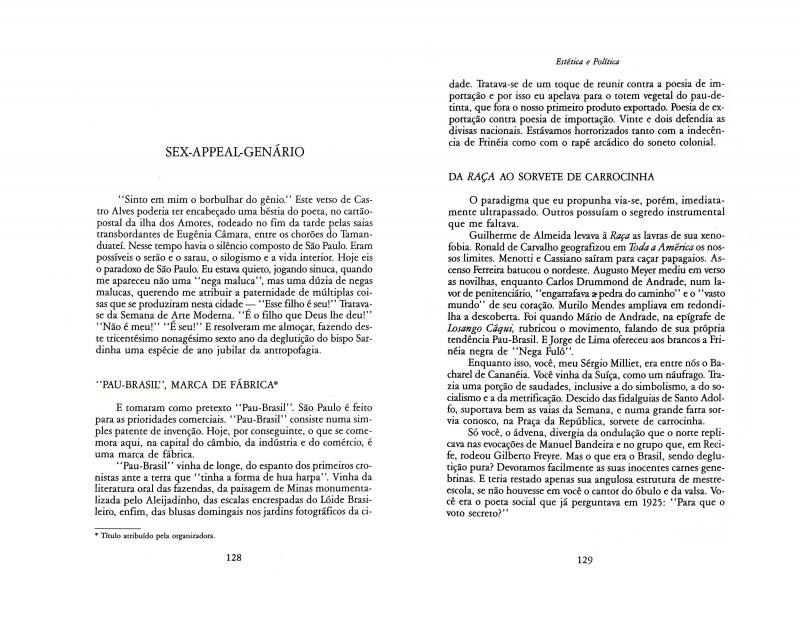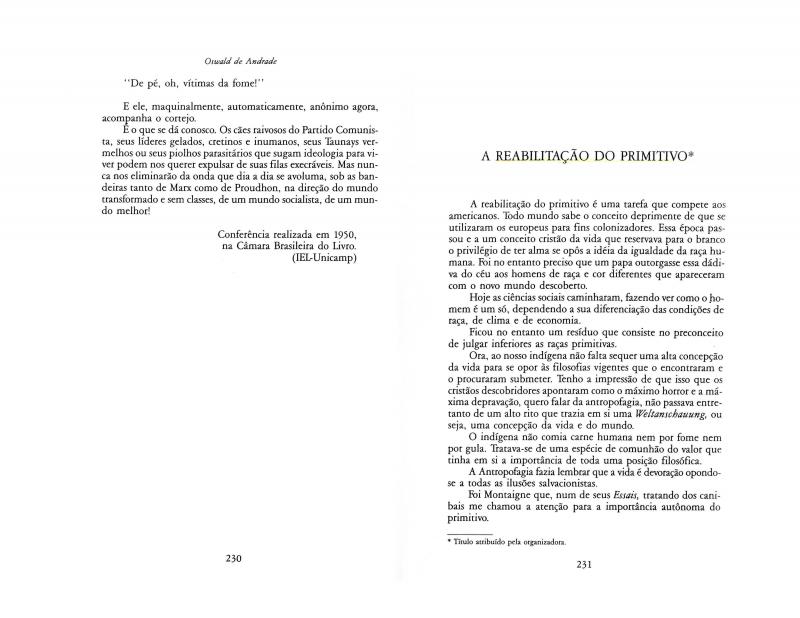Oswald de Andrade (1890–1954) was the creative and intellectual pillar that supported the founding of the so-called Movimiento Antropófago; he contributed the cornerstone of the ideas and theories of this Brazilian modernist movement: the “Manifesto antropófago,” which was written in 1928, four years after its closest forerunner, the “Manifiesto Pau-Brasil.”
In 1946, a year after the end of the Second World War, De Andrade tries to associate the “anthropophagy” metaphor with certain philosophical ideas that were in circulation at the time (such as existentialism, phenomenology, and Marxism), seeking to establish a comparison between his theories and those movements. In his perhaps exaggerated view, it does a better job of addressing the problems generated by the transformation of contemporary man. Many sections of the text are based on quotes taken from the original 1928 version of the Manifiesto Antropófago. The image of the naked man, however, had already been used many times by the artist Flávio de Carvalho in the lecture he gave at the fourth Congresso Panamericano de Arquitetos that was held in Rio de Janeiro in 1930, at the suggestion of the urban developer Lucio Costa, among others. [See the ICAA digital archive: “Uma tese curiosa: a cidade do homem nu” (doc. no. 783858)].
[See the following articles by Oswald de Andrade: “Manifesto antropófago” (doc. no. 771303); “Um aspecto antropofágico da cultura brasileira” (doc. no. 842932); “Manifesto Pau-Brasil” (doc. no. 781051); “Pau-Brasil” (doc. no. 784909); ["’Pau-Brasil’, marca de fábrica…”] (doc. no. 784867); [“A reabilitação do primitivo…”] (doc. no. 784450); “A Marcha Das Utopias” (doc. no. 838902); “Péret” (doc. no. 1110367); “Aspectos da pintura através de ‘Marco Zero’” (doc. no. 783942); “Em prol de uma pintura nacional” (doc. no. 783886); and “Museu de arte moderna” (doc. no. 784030)].










